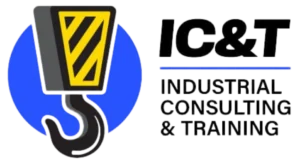“An ounce of prevention is worth a pound of cure.” – Benjamin Franklin
Exposure to silica remains a major problem in the mining industry, causing severe lung diseases like silicosis. Breathing in silica dust can be extremely harmful, and the risk cannot be ignored. That’s why it’s so important for both employers and workers to stay informed, take action, and protect their health. After all, preventing these dangerous diseases is much better than dealing with them later. Let’s explore why it matters and how we can stay safe on the job.
To mitigate or reduce these risks and ensure compliance, the Mine Safety and Health Administration (MSHA) enforces strict silica sampling regulations. Following these regulations not only protects your workforce but also shields your business from substantial fines and legal repercussions.
This blog will guide you through the essential steps of obtaining MSHA Silica Sampling compliance, highlighting how it can make your workplace more safe and regulatory-compliant. From learning about the rules to executing the best sampling practices, you’ll learn real-world applications to develop a safer mine site.
Understanding MSHA Silica Sampling
MSHA silica sampling denotes the MSHA’s efforts to monitor and reduce miners’ exposure to respirable crystalline silica dust, including expanded sampling, spot inspections, and compliance assistance, with the goal of protecting them from silica-related health hazards.
During this process, airborne dust is tested by personal or area samplers. Personal samplers are carried by individual workers to assess the silica exposure they encounter in their breathing zone, while area samplers quantify silica concentrations in particular locations in the mine. The samples are analyzed in a laboratory to find silica concentration.
Steps to Ensure MSHA Silica Sampling Compliance
1. Perform a Workplace Survey
- Identify areas at risk for silica dust exposure based on past records and on-site visits.
- Assess prior sampling data to identify high-risk areas.
- Work with industrial hygienists to determine air quality.
2. Create an Extensive Sampling Plan
- Create a plan for frequent silica sampling as per MSHA recommendations.
- Have sampling equipment calibrated and used by certified personnel.
- Log each sampling incident in detail.
3. Train Employees
- Educate miners on silica risks and the need for sampling.
- Provide hands-on training on protective practices and the correct use of personal protective equipment (PPE).
- Provide periodic refresher training to ensure compliance awareness.
4. Use Engineering and Administrative Controls
- Install ventilation systems and dust suppression systems.
- Use water sprays or wet drilling methods to reduce dust generation.
- Alternate tasks among workers to limit individual exposure durations.
5. Keep Accurate Records
- Maintain extensive records of the results of each sample taken, exposure measurements, and all countermeasures instituted.
- Have ready access to all records in preparation for MSHA inspections.
- Supplement records whenever workplace conditions undergo changes.
MSHA Compliance Support Resources
MSHA Compliance Support Resources are tools, programs, and services designed to help mining operators, workers, and safety professionals stay compliant with the rules and regulations.
It provides crucial training programs to educate miners about safety regulations, especially regarding silica exposure and hazard awareness. With that, mandatory programs such as Part 46 and Part 48 address new miner training, refresher training, and task-based training. MSHA also organizes outreach initiatives, releases guidelines, and undertakes inspections to maintain safety, with particular emphasis on silica dust.
In addition to these incentives, MSHA also offers resources for dust management, safety training workshops, and online resources such as checklists and calculators. It also updates regulators so that operators can stay abreast of new regulations, particularly the rules on silica exposure limits. Through its website, MSHA also makes critical documents accessible and a violation-reporting portal accessible, so it is simpler for mining operations to remain compliant and safe.
It supports resources for compliance are essential because they enable the employer and employee to remain compliant, avoid accidents, and maintain a safe working environment.
Conclusion
Adherence to MSHA Silica Sampling standards is important to the health and safety of your employees. Through the implementation of a sound sampling plan, keeping accurate documentation, and conducting adequate training, you can provide a safer work environment.
Take proactive steps today and explore the expert resources available at MyTrainingCerts.com.

